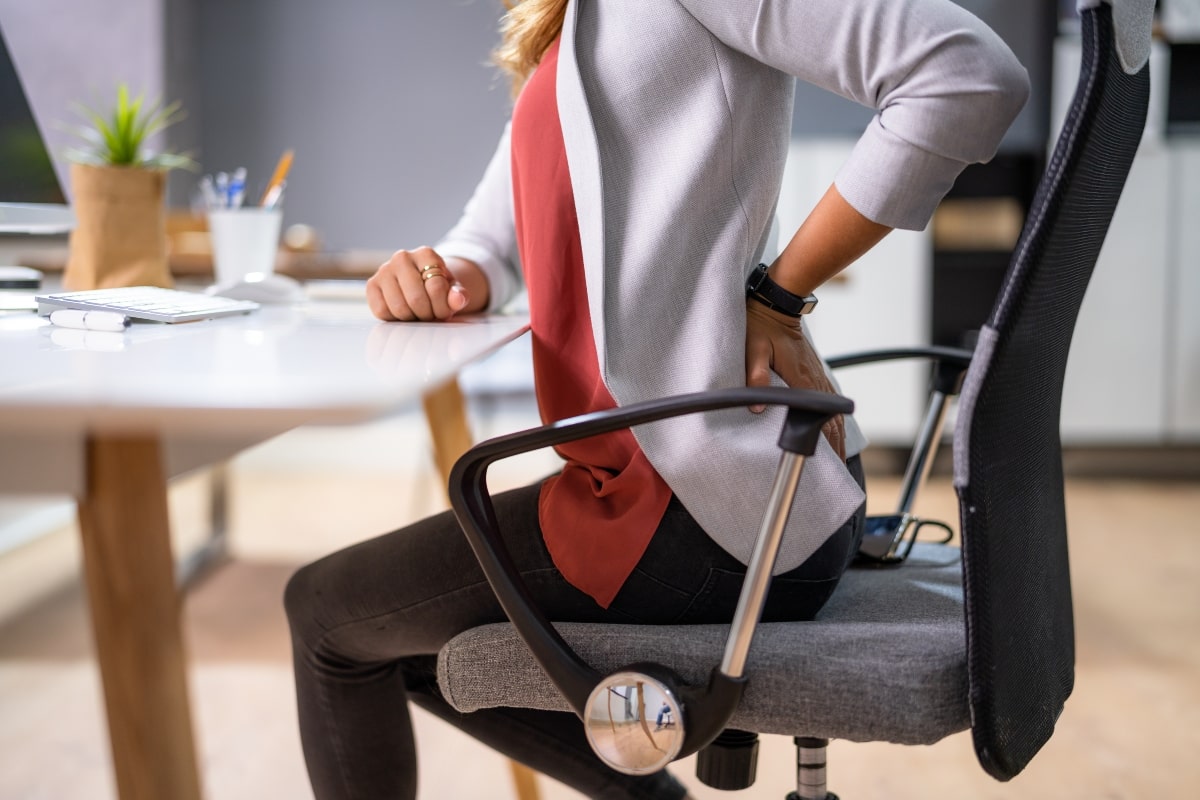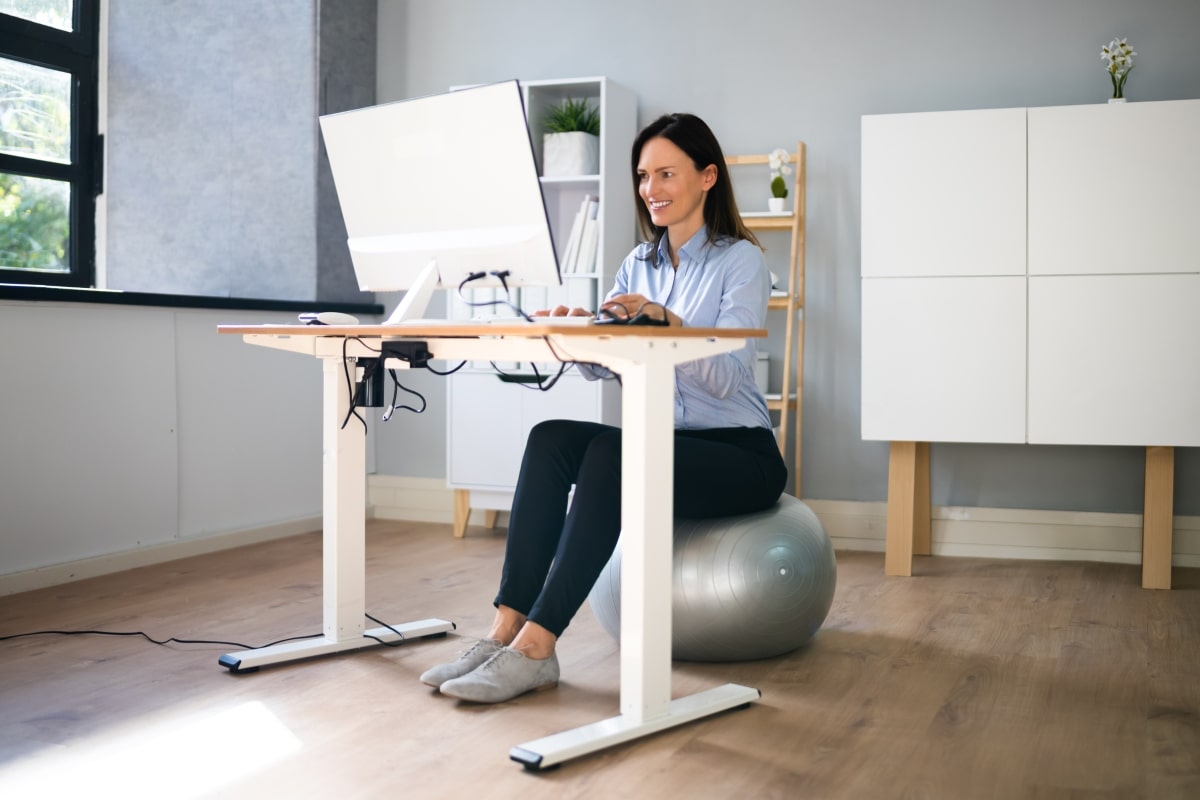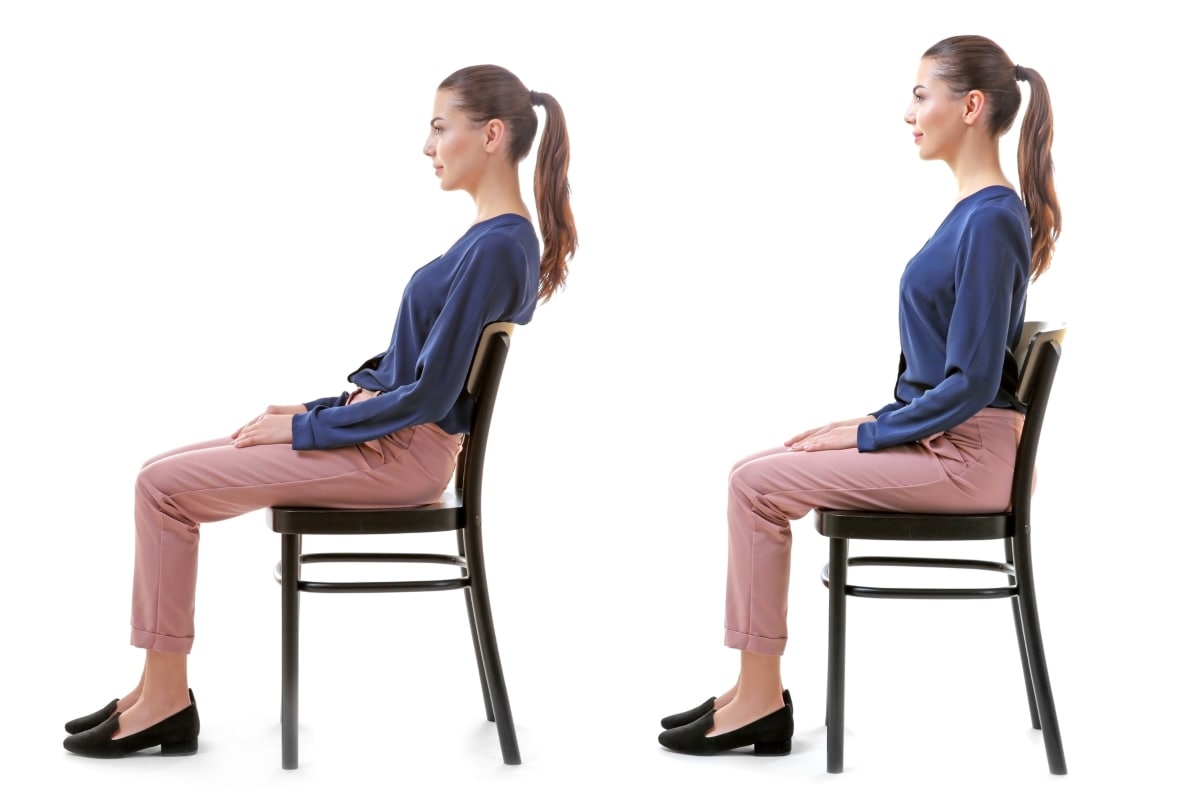Ergonomic assessments are vital in today’s workplaces, ensuring that the setup of workspaces enhances comfort, efficiency, and health. By evaluating how employees interact with their environments, these assessments help reduce injuries and boost productivity.
Simply put, they’re about making sure your office setup supports your team’s well-being and performance, leading to a healthier, more productive workplace.
What is an ergonomic assessment?
An ergonomic workstation assessment optimises your workspace for better comfort and efficiency.
The goal is to ensure your workspace—including how you interact with your office chair, desk and perform tasks—supports your health. It aims to prevent injuries like musculoskeletal disorders by fixing issues related to poor workstation design and work habits.
Occupational therapists or physiotherapists specialising in workplace health conduct these assessments. They examine everything from your desk and chair setup to your posture and any reported discomfort. Depending on your situation, the assessment can last from 30 to 60 minutes.
Then, they identify potential ergonomic risk factors and provide personalised recommendations for an ergonomic office layout to prevent or address discomfort.
Benefits of ergonomic assessments
Workplace ergonomic assessments help build a healthy and productive work environment. Let’s explore the benefits of ergonomic assessments for both employees and organisations.
Reduced risk of work-related musculoskeletal disorders (MSDs)
Musculoskeletal disorders (MSDs) affect muscles, tendons, ligaments, and nerves. They often develop due to poor ergonomic work practices. A workplace ergonomics assessment identifies ergonomic risk factors contributing to MSDs and suggests modifications.
For instance, adjusting the height of an office chair to ensure proper posture can reduce the risk of back pain, one of the most common MSDs. Similarly, ergonomic keyboards can mitigate wrist and forearm disorders by allowing a more natural hand position during typing tasks.
Enhanced employee comfort and productivity
Comfortable employees are happier, and happy employees are more focused and up to 13% more productive.
Ergonomic assessments lead to small but impactful changes, like ergonomic office chairs that support the spine or desks that adjust for standing or sitting, ensuring comfort during long work hours.
Improved overall workplace health and safety culture
Conducting ergonomic assessments signals to employees that their health and safety are priorities. This proactive approach can lead to broader health initiatives like regular stretch breaks or wellness programs.
More financial benefits for organisations
Ergonomic improvements can have a substantial financial impact on organisations. Healthy employees are your most valuable asset, so implementing good ergonomic practices simply makes sense. Reducing the incidence of MSDs and enhancing employee well-being results in a decrease in absenteeism, staff turnover and healthcare claims related to workplace injuries.
Incredibly, for every dollar spent on ergonomic improvements, you can get $2 to $10 back in benefits.
Key components of an ergonomic assessment
Let’s break down the core components of a workplace ergonomic assessment.
Step 1: Evaluate the physical work environment
This step focuses on the physical setup of the workstation, including the desk, chair, computer, keyboard, and mouse. The goal is to ensure these elements support proper posture and minimise strain.
For example, an ergonomics assessment might suggest adjusting the height of an office chair to ensure that the feet are flat on the floor and the thighs are parallel to the ground, reducing lower back strain.
Similarly, the computer monitor should be at eye level to avoid neck and eye strain, and the keyboard and mouse should allow the wrists to remain in a neutral position to prevent carpal tunnel syndrome.
Step 2: Analyse work tasks and processes
This part of a comprehensive assessment examines an employee’s tasks and execution, identifying any processes that may contribute to strain or injury.
For instance, if an employee frequently reaches for files while seated, the assessment might recommend rearranging the desk to keep often-used items within easy reach. This adjustment reduces the need for repetitive stretching or twisting movements, lowering the risk of musculoskeletal issues.
Step 3: Gather employee feedback on discomfort and work practices
Incorporating employee feedback is crucial to identify pain points and areas for improvement that may not be immediately apparent. An ergonomic assessment typically includes surveys or interviews where employees can discuss any discomfort they experience and their daily work practices.
For example, an employee might report that their chair causes back pain by the end of the day, prompting a review and replacement with an ergonomic office chair that provides better lumbar support.
Step 4: Recommend adjustments and improvements
The final component involves synthesising the assessment’s findings into actionable recommendations for enhancing the workstation and work practices. This could range from simple adjustments, like advising workers to take regular breaks from screen time to reduce eye strain, to more significant changes, such as investing in adjustable desks.
Implementing ergonomic equipment solutions
Here are some practical solutions to common ergonomic issues:
- Adjustable monitor stands: Elevate your monitor to eye level, preventing neck strain.
- Ergonomic keyboards and mice: Reduce wrist strain by using peripherals designed for natural hand positioning.
- Desk organisation: Arrange frequently used items within arm’s reach to minimise pulling and turning.
In addition, invest in quality furniture. Explore Arteil’s range of office chairs to find ergonomic solutions that support a healthier work environment. Adjustable furniture may also be a practical and effective solution. Consider the following:
- Adjustable chairs allow for a tailored fit, support the back, and promote good posture. At Arteil, you can build your own chair, ensuring it meets your exact needs.
- Encourage movement and flexibility with an adjustable desk. Sit-stand desks let you alternate between sitting and standing, reducing the risk of sedentary behaviour-related health issues.
Tips for promoting healthy work habits and postures
Provide ergonomic training to encourage healthy habits
Educating employees on the importance of office ergonomics and proper posture is essential. Training sessions on ergonomic principles can cover:
- The correct way to sit and adjust chairs and desks.
- The importance of taking regular breaks to stretch and move around.
Create a supportive environment
A conducive physical and mental environment is key to promoting healthy workplace habits:
Physical environment:
- Ensure cleanliness, proper ventilation, and ample natural light.
- Supply ergonomic furniture to minimise physical strain. Adding plants can also enhance air quality and provide a calming effect.
Mental well-being:
- Foster a culture of openness for discussing stress and challenges.
- Offer access to mental health and ergonomic resources to demonstrate the company’s commitment to employee health and well-being.
Implement regular breaks
Encourage employees to take short breaks throughout the day to stretch, reducing muscle fatigue and boosting concentration.
Promote open communication
Creating channels for employees to suggest improvements or voice concerns about working environments fosters a culture of continuous improvement and mutual respect.
Make a difference with Arteil today
Check out our ergonomic chairs to make your office more comfortable. Make healthy employees your competitive advantage. Find the right fit for your workspace now.







